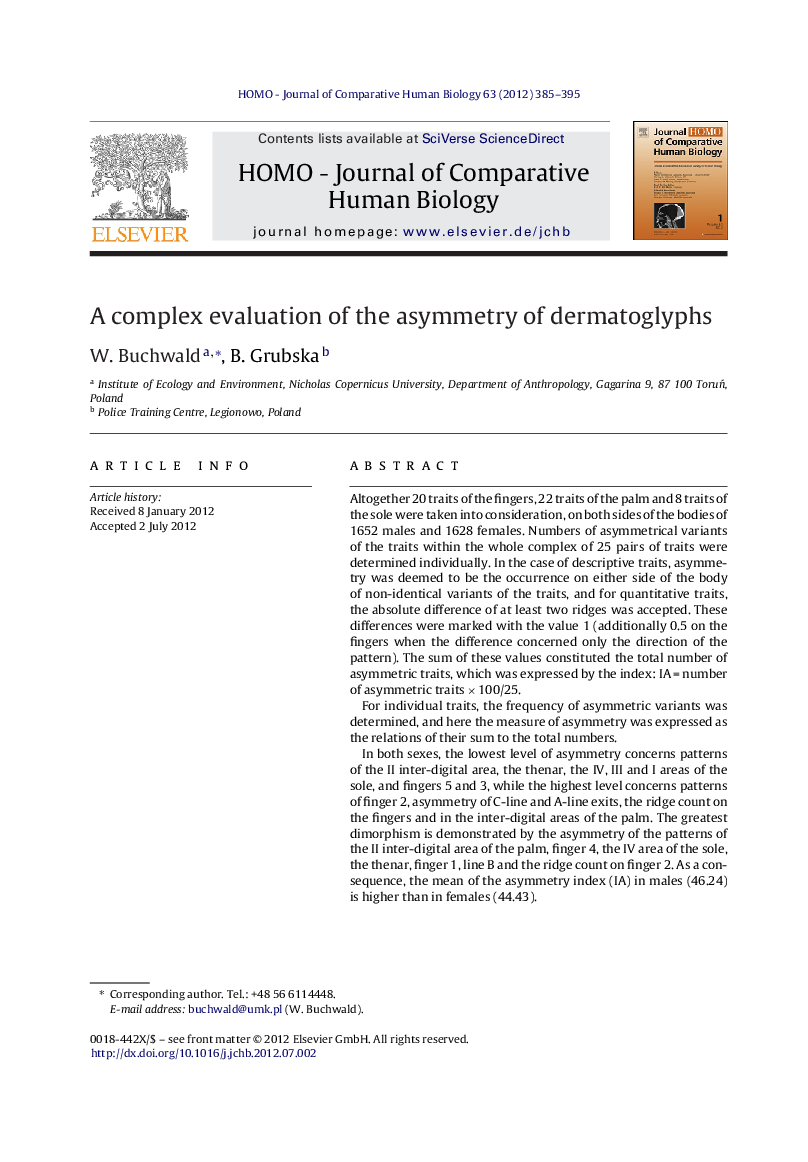| کد مقاله | کد نشریه | سال انتشار | مقاله انگلیسی | نسخه تمام متن |
|---|---|---|---|---|
| 100237 | 160974 | 2012 | 11 صفحه PDF | دانلود رایگان |

Altogether 20 traits of the fingers, 22 traits of the palm and 8 traits of the sole were taken into consideration, on both sides of the bodies of 1652 males and 1628 females. Numbers of asymmetrical variants of the traits within the whole complex of 25 pairs of traits were determined individually. In the case of descriptive traits, asymmetry was deemed to be the occurrence on either side of the body of non-identical variants of the traits, and for quantitative traits, the absolute difference of at least two ridges was accepted. These differences were marked with the value 1 (additionally 0.5 on the fingers when the difference concerned only the direction of the pattern). The sum of these values constituted the total number of asymmetric traits, which was expressed by the index: IA = number of asymmetric traits × 100/25.For individual traits, the frequency of asymmetric variants was determined, and here the measure of asymmetry was expressed as the relations of their sum to the total numbers.In both sexes, the lowest level of asymmetry concerns patterns of the II inter-digital area, the thenar, the IV, III and I areas of the sole, and fingers 5 and 3, while the highest level concerns patterns of finger 2, asymmetry of C-line and A-line exits, the ridge count on the fingers and in the inter-digital areas of the palm. The greatest dimorphism is demonstrated by the asymmetry of the patterns of the II inter-digital area of the palm, finger 4, the IV area of the sole, the thenar, finger 1, line B and the ridge count on finger 2. As a consequence, the mean of the asymmetry index (IA) in males (46.24) is higher than in females (44.43).The proposed index of dermatoglyphic asymmetry (IA) may be used for comparative purposes in population, clinical, auxological and genetic research.
Journal: HOMO - Journal of Comparative Human Biology - Volume 63, Issue 5, October 2012, Pages 385–395